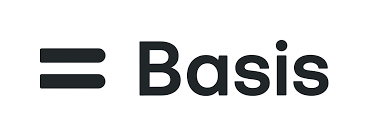For growing companies and partners on AWS, Azure, GCP & Kubernetes.












Here's how our platform and AI teammate work together to help.
Too many alerts, not enough clarity
Security is slowing down engineering
Can't see or understand where the real risks are
Hard to know what to fix first
Struggling to find or train cloud security talent
Can't hire or retain enough security engineers
Jumping between systems to investigate and resolve issues
Too much time and money spent on low-impact tasks
Deploy in minutes, not weeks
Cut remediation time
Eliminate 90% of alert noise
Slash investigation time by 50%
Supercharge engineering velocity by 75%

Unlike traditional security tools or human analysts, Pleri is always on, always learning, and ready to tackle your cloud security challenges from day one. No interviews, no onboarding, no training period.
Continuously monitors your cloud environment and takes action when needed
No time off, no sick days, always vigilant and ready to respond
Deploy in minutes and get immediate value with zero ramp-up time
Continuously improves with the latest security intelligence and your feedback
Integrates with AWS, Azure, Kubernetes, and your existing tools



No credit card needed
"Plerion has significantly reduced the time required to identify critical security issues in our environment."
- Damian Bisignano, DevOps Tech Lead, Cashrewards

And so will you.
Gartner would call it a Cloud-Native Application Protection Platform (CNAPP) but we think it's everything you need to secure your cloud.

Stop being overwhelmed by vulnerability management.
We not only find vulnerabilities in cloud containers, images, and code, we order them so you can fix the ones that put you at risk.


There are infinite ways to misconfigure your cloud. Only a few of those put you at risk. The rest are a distraction. We keep you focused.
Attackers move around the cloud by compromising identities. We show you who has access to what so you can limit the blast radius of attacks.

You can't secure what you don't know exists. We show you the truth about everything in your cloud so you can decide where to invest.
Logging into a pretty dashboard is fun but it's a waste of time. We put all the information you need to act in the tools you already use.



Gartner would call it a Cloud-Native Application Protection Platform (CNAPP) but we think it's everything you need to secure your cloud.

What you think is in your cloud is often different to what's really there. Identify and query the truth any time with Cloud Asset Inventory.

There are more ways to configure cloud resources than we can count. Find the bad ones with Cloud Security Posture Management (CSPM).

The code running in your cloud is just as important as the configuration. Find vulnerabilities in running software with Cloud Workload Protection Platform (CWPP).

Who has access to what shapes how attackers move around an environment. Limit their options with Cloud Infrastructure Entitlement Management (CIEM).

Everyone has a bad day at some point. Know immediately when its your turn and respond quickly with Cloud Detection and Response (CDR).

Sometimes it's easier to start with the thing you are trying to protect and work backwards. Control your data with Data Security Posture Management (DSPM).

In an ideal world, it's better to stop misconfigurations before they make it to production. Shift left with Infrastructure as Code (IaC) Scanning.

It's not sexy but everyone has to do it. No matter what standard or regulation is important to you, monitor adherence with Cloud Compliance.

At some point someone will ask you what's in your software. Track every component running in your cloud with Software Bill of Materials (SBOM).


Risk scores show which assets, accounts and tenants are at risk.

Attack paths highlight realistic ways attackers might access data.

Set thresholds for annoying people based on any finding property.

Filter and sort issues based on whatever matter to you, or the auditor.

